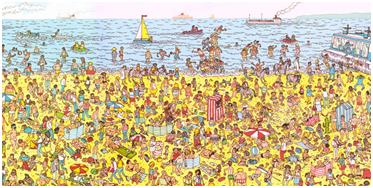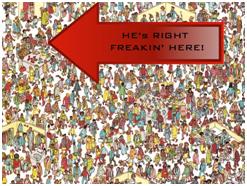 To quote the great behaviorist, Ogden R. Lindsley, “You must remember that the box is not there to keep the animal in, it’s there to keep the world out.” The ‘box’ he was referring to was an ‘operant chamber’ – an enclosure designed specifically for one type of experiment. This is the mainstay of behavioral scientists. When you hear the term “learning theory” this is the context of all their research and conclusions. Here’s why that model doesn’t work in the real world – they intentionally lock the real world out of their research. Only a devotion to the world around you will yield dependable knowledge. Here’s a topic that is a great example of how a broad view of behavior can give you a better understanding of how it works – four ways an animal learns to identify unique events.
To quote the great behaviorist, Ogden R. Lindsley, “You must remember that the box is not there to keep the animal in, it’s there to keep the world out.” The ‘box’ he was referring to was an ‘operant chamber’ – an enclosure designed specifically for one type of experiment. This is the mainstay of behavioral scientists. When you hear the term “learning theory” this is the context of all their research and conclusions. Here’s why that model doesn’t work in the real world – they intentionally lock the real world out of their research. Only a devotion to the world around you will yield dependable knowledge. Here’s a topic that is a great example of how a broad view of behavior can give you a better understanding of how it works – four ways an animal learns to identify unique events.
 In an austere environment you become hyper-sensitive to any deviation. If I put you in a totally white room you will spot a bug in an instant. In your living room you may not spot a bug several times larger – unless you happen to catch some form of movement from the corner of your eye. That is the key to this topic – your senses combined with perceived deviation from a static norm causes you to “pay attention.” By static norm I mean deviation from what you expect based on prior experience. EG: The ocean is not static but an object moving in a straight line through the ocean is an anomaly and will be noticed. Consider how this submarine periscope would draw your attention if you were on a ship in hostile waters. So, we all start with a static environment and then interpret those things that are important to us. Pavlov called this the “what’s that” response. It basically works like this. Here are four possibilities for identifying important relationships.
In an austere environment you become hyper-sensitive to any deviation. If I put you in a totally white room you will spot a bug in an instant. In your living room you may not spot a bug several times larger – unless you happen to catch some form of movement from the corner of your eye. That is the key to this topic – your senses combined with perceived deviation from a static norm causes you to “pay attention.” By static norm I mean deviation from what you expect based on prior experience. EG: The ocean is not static but an object moving in a straight line through the ocean is an anomaly and will be noticed. Consider how this submarine periscope would draw your attention if you were on a ship in hostile waters. So, we all start with a static environment and then interpret those things that are important to us. Pavlov called this the “what’s that” response. It basically works like this. Here are four possibilities for identifying important relationships.
 1) Only Waldo. A Skinner Box world. Waldo is an anomaly like the periscope on a calm sea.
1) Only Waldo. A Skinner Box world. Waldo is an anomaly like the periscope on a calm sea.
 2) All Waldo – a place where everything is static, like the ocean with no significant deviation. You will note that your eye is drawn to those few things that are not Waldo-esque – the splashes of color that don’t match the Waldo uniform.
2) All Waldo – a place where everything is static, like the ocean with no significant deviation. You will note that your eye is drawn to those few things that are not Waldo-esque – the splashes of color that don’t match the Waldo uniform.
3) Where’s Waldo ?
?
 4) Here’s Waldo!
4) Here’s Waldo!
In a robust environment if you wish to make correct associations between cause and effect you must have a signal that focuses attention on a particular piece of information. If this does not occur the animal is left to play “trial and error” to figure out what event or behavior is “causative”. The point of the signal is to filter out information that does not lead to the correct answer. The information is not removed forever. If I change the question to “Where’s Sally” you had better be able to shift gears and reconsider all that information you just trashed. If you owe Waldo money you will have a completely opposite reaction to information about his location. Note: That is the problem with having a bias in favor or positive or negative motivations. The process is the same for both sides of the coin.
